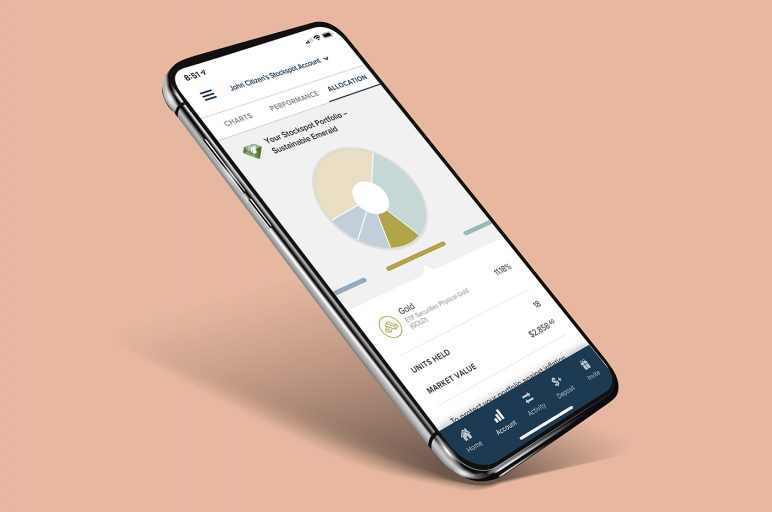In this article we answer some common questions about managed funds.
- What is a managed fund?
- How do managed funds work?
- How do you choose a managed fund?
- What is the average return on managed funds?
- Why do most managed funds underperform the index?
- How do you find a good managed fund?
- Is a managed fund an ETF?
- How risky is a managed fund?
- Do you pay tax on managed funds?
- Can you withdraw money from a managed fund?
- What is a reasonable fee for a managed fund?
- What are the pros and cons of a managed fund?
- Stockspot verdict on on managed funds
What is a managed fund?
A managed fund is an investment vehicle where your money is pooled with other investors. It’s combined capital, which could be invested across a range of asset classes such as shares, bonds, property and infrastructure.
The difference being to owning shares, where you have a direct investment in the company, is that the actual managed fund owns the investment/s and an investment manager is in charge of buying and/or selling the asset on your behalf.
How do managed funds work?
When you invest in a managed fund it diversifies your investment strategy and portfolio. When you invest in a managed fund you are buying units in that fund and you are issued with shares or units in that fund.
Each share or unit represents an equal portion of the fund’s value. Depending on the fund, you may receive dividends or distributions based on the profit or income it receives from the underlying assets.
The value of your units is calculated daily and changes as the market value of the assets in the fund rises and falls.
How do you choose a managed fund?
There are literally thousands of managed funds to choose from, so take your time, and evaluate what types of funds there, the risks and returns that they offer, and make sure when you choose one that it aligns with your investment strategy.
There are:
- Single asset managed funds, which are funds that invest in a single asset class such as shares, property or bonds
- Mixed asset or multi-sector managed funds, which invest in a range of investments.
It is always important that you assess past performance of the fund and that you read and understand the product disclosure statement.
The fact is assessing a fund’s performance over five to 10 years will give you a better indication of their achievements than over one or two years.
Even five or 10 year performance is unlikely to give you a good idea of future performance because the style that works for a fund manager in one period may not work in the next period.
Active fund managers can have lengthy periods of outperformance which are largely driven by their style (growth vs value investing). Over the last 5 years there have been large inflows into outperforming ‘growth’ funds in Australia like the Hyperion Global Growth Companies Fund and Bennelong Australian Equities Fund. However over the last 6 months many of these funds have suffered large losses due to their heavy weighting to the technology and consumer sectors. e.g. Hyperion -28.9% and Bennelong -17.5% over the 6 months to the end of April 2022.
An similar U.S. example of this is the ARKK Innovation Fund which attracted huge inflows around the peak of its performance in late 2000/ early 2021 and has since fallen 70%.
Flows into managed funds generally peak around the same time as their relative performance, so on a money-weighted basis investors lose out long term by chasing styles.
What is the average return on managed funds?
Managed fund returns will vary depending on what asset class you have invested in and for how long. It can vary from underperforming the market to exceeding the market. There is no ‘one-size fits all’ category, which is why you need to do your research before investing.
A simple index ETF outperformed active managed funds both before and after fees in the popular asset classes of Australian large cap shares and Global large cap shares.
Australian large cap shares managed fund 5 year returns to 30 April 2022
| Index ETF net return after fees | 8.96% p.a. |
| Average managed fund return after fees | 7.48% p.a. |
| $100,000 invested in the ETF 5 years ago | $153,580 |
| $100,000 invested in the average managed fund 5 years ago | $143,429 |
Based on Stockspot research, 74% of managed funds underperformed the index ETF over 5 years, which is consistent with S&P research which shows 85% underperform the index over the long run (15 years).
Global large cap shares managed fund 5 year returns to 30 April 2022
| Index ETF net return after fees | 14.19% p.a. |
| Average managed fund return after fees | 9.08% p.a. |
| $100,000 invested in the ETF 5 years ago | $194,151 |
| $100,000 invested in the average managed fund 5 years ago | $154,427 |
Global managed funds had the worst relative performance vs a simple index ETF over the last 5 years, underperforming by 5.61% p.a. each year for 5 years. Only 6 of 244 active managers outperformed the index ETF. You would be $40,000 better off investing in the global index ETF compared to the average active manager over the last 5 years.
Read more in our blog What are the best managed funds?
Why do most managed funds underperform the index?
Active investing is a zero sum game, for every winner there has to be a loser and since 95% of trading happens between professionals you would expect the average active manager to achieve a return similar to the market return minus fees and other trading costs.
This is particularly true in highly competitive and professionalised markets like Australia and the U.S. where large cap shares are covered by hundreds of analysts and fund managers and there is very little ‘edge’ over each other or the market’. This continues to hold true for Australian equities across different investment structures – we have found similar results in our research of LICs and actively managed super funds which both underperform equivalent index ETFs.
Read more on Why fund managers don’t beat the market
How do you find a good managed fund?
Is a managed fund an ETF?
No. A managed fund is not typically listed on the Australian Securities Exchange (unless it’s a mFund). An exchange traded fund (ETF) is listed on ASX and therefore you have greater trading flexibility and daily liquidity.
Managed funds are normally actively managed to try to outperform a benchmark index while ETFs are mostly passively managed, as they usually aim to track a benchmark index.
ETFs are becoming the most popular way for Australians to invest. Many investors are turning to ETFs replacing their traditional active managed funds and LICs due to erratic performance and high fees.
Australians invested $23 billion into ETFs over the past year to 31 March 2022, the highest yearly inflow on record. The industry is consistently seeing money flow out of actively managed funds, and pouring into index funds and ETFs However, ETFs still only make up around 4% of the total funds market in Australia compared to 25% in the U.S. We believe there’s a lot further to go in the Australian ETF market.
How risky is a managed fund?
Investing in any asset class involves risks. Your managed fund may underperform or decline in value, which will obviously affect your return. Therefore, you think carefully before you invest. There is never ever any guarantee for performance. You should always read the product disclosure statement carefully before you invest in any product.
An additional risk with managed funds compared to investing in an index ETF is fund manager risk. A change in the person or team managing the portfolio may impact future performance.
Do you pay tax on managed funds?
Managed funds do not generally pay tax because their income (including net capital gains) is distributed to investors each financial year. Investors pay tax on distributions at individual marginal tax rates.
The income of managed funds retains its character as it passes to investors. Income may comprise dividends, interest, foreign income, net capital gains and other income. Each of these income components has different tax implications for investors.
ETFs are generally more tax efficient than managed funds. ETFs tend to have lower portfolio turnover so have less capital gains to pass on to investors. Second, unlike unlisted managed funds, ETFs do not need to sell the shares they’ve invested in to raise cash to pay investors who redeem or sell the fund. This helps to reduce the tax liability for investors in ETFs and is a benefit of ETFs over managed funds.
Read more on How are ETFs taxed?
Can you withdraw money from a managed fund?
There are normally fees and/or restrictions on when you can withdraw money from a managed fund as well as a buy/sell spread of somewhere between 0.1% to 0.3%.
It is not uncommon for a managed fund to make you wait a minimum of 3 months before you can withdraw your money. Some managed funds don’t allow withdrawals when the market is volatile to protect other members’ interest. This is known as a ‘lock up’ or ‘putting up the gates’.
Distribution and/or dividend payments can also be stopped in unfavourable market conditions.
You will find your withdrawal rights in your fund’s product disclosure statement.
On the other hand, ETFs can be traded even when markets are volatile and market bid/ask spreads are often lower than managed funds spreads. Stockspot allows clients to sell their ETF holdings whenever the share market is open and receive their funds after normal ASX T+2 settlement.
What is a reasonable fee for a managed fund?
Managed fund fees are typically between 0.5% and 2.5% per year, which is deducted from the unit price. Some funds charge performance fees, which is where there is an extra fee a fund manager can charge if the investment returns are better than the benchmark or what was the stated target returns.
The higher the managed fund fee, the harder it is for the managed fund to outperform the index because fees create a drag on performance.
High fees are one of the key reasons why managed funds underperform similar ETFs. The average Australian large cap fund manager fell well short of the index ETF performance after fees, underperforming by 1.48% p.a. over 5 years. This was largely due to the higher average fees of 1.32% p.a. compared to 0.10% p.a. for the Australian Shares Index ETF (VAS).
Active fund managers would need to dramatically reduce their fees for a higher proportion to outperform the market index. We believe this mathematical certainty is likely to drive a continued structural decline in managed funds.
What are the pros and cons of a managed fund?
Pros
- You get diversification with your investment and you are less exposed to the performance fluctuations than individual shares.
- You don’t need five figures to get started. You can invest, depending on the fund, with a few thousand dollars. There are managed funds available for personal investors, high net worth individuals, self-managed super funds, companies and major institutions.
- The fund is managed by experts thereby, unlike the stock market, you don’t have to undertake extensive individual research every day.
- You can invest in companies around the globe. This gives you greater diversification and exposes you to a bigger financial market.
- Managed funds provide a regular source of income and depending on your fund, you could receive monthly, quarterly or half-yearly income distributions. You can either receive cash or re-invest them back into the fund.
- Depending on the terms of the fund you have invested in, you could potentially be able to withdraw funds or switch to another fund. Please check your product disclosure statement first.
Cons
- There are normally fees associated with a managed fund, which could include initial investment fee, ongoing management fees and of course an exit fee when you want to retrieve you money. Again, check your product disclosure statement carefully regarding fee charges.
- Managed funds take away individual ownership and you don’t have control over your asset selection. The manager of the fund chooses the assets/industry that you invest in.
- Like any investment, you can lose money on a managed fund. If the managed fund generate losses then the capital value of your investment declines.
- If inappropriate investing is made or the fund manager is alleged to have engaged in fraudulent activity, there could be a run on the fund and if the fund doesn’t have sufficient liquidity, the trustee could free the fund, which would restrict any further redemptions.
- Across almost all asset classes and time horizons, managed funds underperform index ETFs.
Stockspot verdict on managed funds
We prefer ETFs over managed funds for our Stockspot clients over any of the available active funds because
Most active managers underperform the index on an after fee basis across all asset classes.
Money weighted returns in active funds are lower still due to the behavioural bias to attribute outperformance to skill rather than luck. This leads to flows moving into outperforming active funds just before a period of underperformance.
Compared to managed funds, ETFs have the benefit of lower fees, better tax efficiency, full transparency and no fund manager risk.




